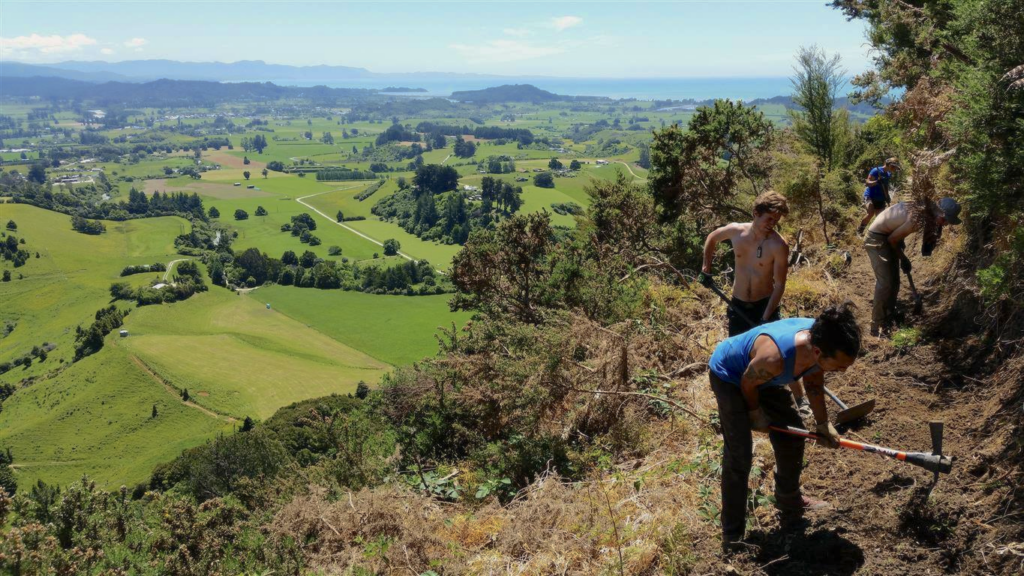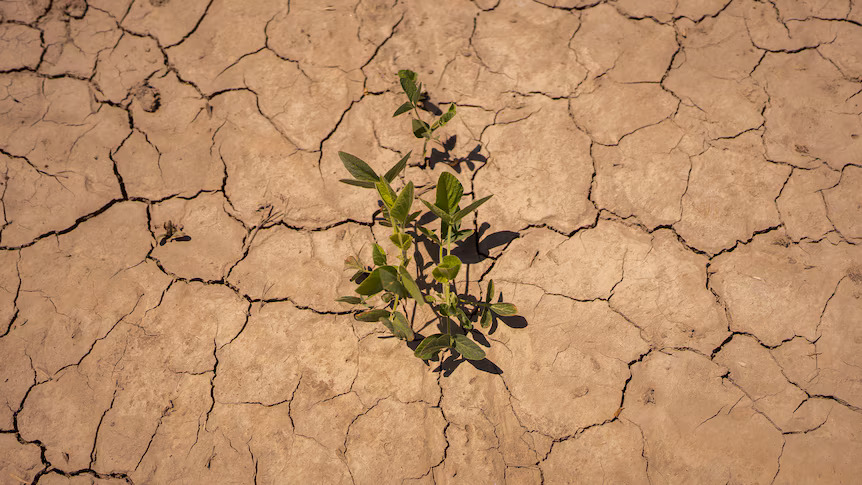Original publication by Zach St. George for e360.yale.edu on April 6 2023

MARTIN HARVEY/ALAMY
Backed by the UN, an alliance of conservationists and policymakers is devising new ways to finance the preservation of biodiversity by placing economic values on ecosystems. Some analysts say such schemes have the potential to boost conservation, but others are skeptical.
In 2009, as global financial markets shuddered, David Dorr became interested in the possibility of putting a price on nature. Dorr is a Cayman Islands-based global macro trader, attuned to what he calls the “butterfly effect” of geopolitics and other international forces on financial markets. The economic crisis, Dorr had realized, paled beside the looming environmental one. “Nature, holy shit, is in severe crisis,” Dorr recalls thinking. The existential threat to humanity posed by environmental degradation was “something that’s gonna touch every asset class.”
Dorr knew about carbon credit schemes, in which people, governments, or companies pay for the storage or removal of carbon from the atmosphere to offset their greenhouse gas emissions. But he wanted something broader, a way to judge the value of nature not in an extractive sense, nor by the so-called ecosystem services that nature could provide, but by its own inherent value.
It has taken longer than Dorr expected, but his vision, if not yet a reality, is now at least widely shared. Scientists, conservationists, and policymakers around the world are working to develop what they call biodiversity credits. While varied in detail, these credits are alike in their purpose: attaching economic value to the preservation or restoration of ecosystems.
Only a few companies currently have biodiversity credits for sale, but many more are working to develop them.
In broad outline, it works like this. Companies developing biodiversity credits identify a threatened habitat and form a partnership with the owners of that land. The company or a third party then conducts a biological survey to establish the habitat’s baseline condition, using factors like species richness, ecological integrity, and water quality. The company then devises a plan for improving habitat and protecting it over a given stretch of time, usually a decade or longer.
At given intervals, perhaps every year or two, the company, or the third party, monitors its progress. If the habitat has met the agreed-upon goals of improvement, it generates a biodiversity credit, which someone else can buy. Revenues from the credit are split between the landowner and the biodiversity credit developer.
“We only get paid when we deliver the performance outcomes,” says Mariana Sarmiento, CEO of Terrasos, a Colombian company that last year became one of the first to offer biodiversity credits for sale, with 62,000 12-square-yard plots of conserved or restored ecosystems that will be managed for 30 years. The price is currently around 30 euros per unit, and slightly more than 100 have been sold so far.
Many people hope, like Dorr, that these biodiversity credits will eventually be standardized, as carbon credits are, with consistent contents and price, and can then be traded internationally in the manner of commodities. Packaged like this, they argue, biodiversity credits could provide a way to fund conservation on an unprecedented scale. The need is acute: According to a recent World Economic Forum paper, estimates of the cost to halt the current global loss of biodiversity are as high as $1 trillion annually. Less than $150 billion is currently spent on such efforts each year.

ACCOUNTING FOR NATURE
Although only a few companies currently have biodiversity credits for sale, comprising probably less than a few hundred acres, many more are working to develop them. Already, large players in the carbon credit industry are getting involved.
There are good reasons to be skeptical that the nascent biodiversity credit industry will deliver all its proponents say it will. One challenge lies in showing that the money spent on these credits actually has its desired effect. This problem has plagued the carbon credit market since its inception in the early 2000s. A recent example came to light this past January when a joint investigation found that the majority of rainforest carbon credits certified by Verra, the world’s largest certifier of voluntary carbon credits, were, in fact, worthless.
But developers of biodiversity credits face another hurdle, unique to their endeavor, which is that unlike carbon, which can be quantified using weight-based metrics, biodiversity is diffuse. Even E. O. Wilson, who helped popularize the term “biodiversity,” struggled to concisely define it, writing that it encompasses “the totality of hereditary variation in life forms, across all levels of biological organization” from genes to individual species to entire ecosystems. Setting a value for the protection or preservation of such diversity is difficult. Applying a consistent value to a biodiversity credit generated in the Amazon rainforest and one from the Sahara Desert is even harder.
One company is developing credits that will each protect one hectare of habitat and its wildlife for at least 10 years.
Alain Karsenty, an environmental economist at the French Agricultural Research Centre for International Development, is in favor of biodiversity credits — or “certificates,” his preferred term. But he says he is “not sure biodiversity certificates will attract a large amount of money and buyers.”
The phrase “biodiversity credit” has appeared in the scientific and conservation policy literature for at least 20 years, usually in reference to what are also called “biodiversity offsets,” legally mandated in some countries. “You basically damage habitats of an endangered species in one area, and then you try to rebuild the habitat in another,” says Paul Steele, an economist at the International Institute for Environment and Development (IIED). “But that’s pretty challenging to do and almost never works.”
In 2020, Steele published a paper with his IIED colleague Ina Porras proposing a new use of the phrase. These biodiversity credits, or “biocredits,” would operate on a voluntary basis, underpinned by supply and demand: On the one hand were those who wanted to contribute funding to conservation; on the other hand were conservationists and landowners who needed funding to do that work. The scheme would be able to fund protection and restoration of places rich in carbon, like peat swamps, and those poor in carbon, like deserts.
At first, the paper seemed to flop, Steele says. But over the next two years, the idea took off.

LIAN YI / XINHUA VIA ALAMY
Simon Morgan, a South African ecologist, says he and his colleagues came to the idea of biodiversity credits after watching the Covid-19 pandemic devastate tourism in Africa. “So much of our conservation efforts are underpinned by tourism,” he says. He thought, “‘Well, what else can we do?’” With his colleagues, he founded ValueNature, which is now developing global biocredits that will each protect or restore one hectare of habitat and its wildlife for at least 10 years.
Morgan quickly realized that people in other parts of the world were doing similar work. The concept gained more momentum late last year after the parties to the Convention on Biological Diversity adopted the so-called Kunming-Montreal Global Biodiversity Framework, which set global conservation targets through 2030. Among other things, the parties agreed to provide funding for “innovative schemes such as payment for ecosystem services, green bonds, biodiversity offsets and credits, and benefit-sharing mechanisms, with environmental and social safeguards.”
ValueNature is the acting secretariat of the Biodiversity Credit Alliance, which it founded last year and which is funded by the United Nations Environment Programme, the UN Development Programme, and the Swedish Development Agency. The Alliance’s 80-odd members include carbon credit companies, tree-planting companies, universities, laboratories, conservancies, and consultancies, along with a number of companies and organizations that aim to develop biodiversity credits.
Members of the alliance agree that they must be diligent in proving that biocredit buyers are getting what they pay for.
The alliance is now working to develop a set of standards and definitions. One principle that appears to have wide support among members is that of additionality, which requires biocredits to be based on either measurable improvement of a degraded ecosystem or protection of an ecosystem under imminent and provable threat. Additionality prevents the sale of credits for healthy land that’s already protected.
Members of the alliance also agree, in principle at least, that they must be diligent in proving that biocredit buyers are getting what they’re paying for. Morgan thinks distributed ledger technology, or blockchains, could help with transparency, offering a way for biocredit developers and biodiversity custodians to provide data directly to funders on their ecological restoration efforts. ValueNature plans to upload the information it collects from camera traps, bioacoustics monitors, and remote sensing technologies directly onto its digital ledger, Morgan says, creating “an immutable data stream.”
Naturally, disagreements exist over what the biocredit industry ought to look like. In a 2022 paper, Steele and his IIED colleague Anna Ducros argued that people developing biocredits should focus on alleviating poverty, with the biggest share of any revenues going to Indigenous people and local communities. Ideally, these populations would be the ones developing and selling the biocredits, Steele says, “so it’s more than just getting a kind of handout from the proceeds that some other middleman or middlewoman — normally a man — is developing.”

EKOS
But Dorr, the global macro trader, believes there is an important role for the middleperson to mediate between the biocredit developer and the biocredit buyer. In that role, a trader can invest money in projects in a speculative manner, he says, allowing developers to get their project to the point of sale. The trader, he claims, also provides an important layer of vetting for potential buyers, meanwhile, ensuring that the credits are accredited and otherwise satisfactory. Pure and unfettered capitalism, including its middlepeople, he says, is the best way to join the many potential buyers of biocredits with the many ecosystems in need of conservation and restoration.
But an inescapable hurdle remains: Despite long efforts, there is still no standard metric for trading. “It’s been a holy grail to some degree,” says Nerida Bradley, chief operating officer at GreenCollar, an Australian company now working to develop a proprietary biocredit based on standards set by a third-party accreditation company.
Ekos, a New Zealand carbon credit developer and accreditor that is also part of the Biodiversity Credit Alliance, is working on its own proprietary biodiversity credit. Jemma Penelope, an Ekos senior consultant, thinks it’s unlikely that a consistent and widely translatable unit will emerge. “At the moment, we don’t see a single unit of biodiversity ever really being able to give us what we need,” she says. “Because ultimately for us, it’s funding communities to look after their ecosystems. We’re not here to meet the needs of the financial system.”
It remains unclear whether biodiversity credits will ever take off and reach a global audience.
Others insist a standardized unit is both possible and desirable. Terrasos, the Colombian biocredit developer, provides an example of how a universal biocredit might work. To assess the potential value in biocredits of a given area of land, the company compiles data on the rarity of the ecosystems that land contains, its state of degradation and restoration potential, how it contributes to ecological connectivity, whether it contains species on the IUCN’s Red List, and other factors. It enters these data into an algorithm that calculates the number of credits that the project can issue. Habitats that are more threatened provide more potential biocredits, and habitats that are less threatened provide fewer.
“Is it perfect? No,” Mariana Sarmiento says of her company’s algorithm. “Is it good? I think so.” Provided enough data, she says, “you can apply it anywhere.”
It remains unclear whether biocredits will ever take off and reach a global audience. Still, Dorr can picture the final steps: After the biocredits are created and certified by an independent body, a trader will assign them a monetary value. Dorr is currently working on this process, taking into account the typical cost of carbon credits and of ecological preservation and restoration.
Eventually the right price will be found, he says, and biocredits will flood onto the market followed by the money of donors, which will flow to where it will do the most good — a quantity of good, he says, that will exceed what conservationists can currently imagine. “So everybody is happy,” Dorr says. “They just don’t realize it yet.”




